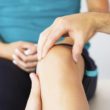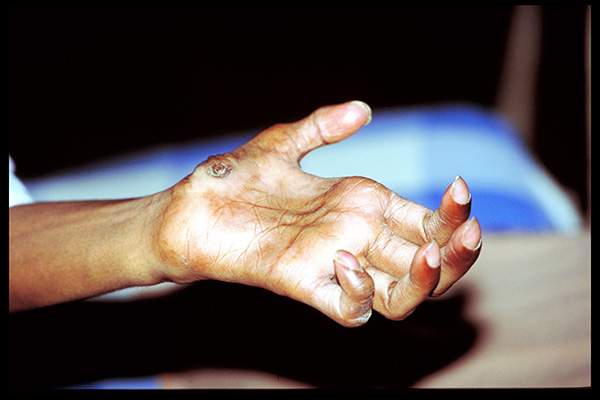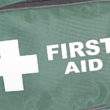Leprosy, also called Hansen’s Disease, refers to a chronic infection by the bacteria Mtcobacterium lepromatosis or Mycobacterium leprae. It is a communicable disease, so this means it can spread between people through droplet or contact with an infected person’s body fluid. Although it is communicable, it is not highly contagious. The following are the causes, signs and symptoms, and home remedies for leprosy.
Causes
According to Medicine Net, leprosy is caused by Mycobacterium leprae. As per the publication, it is a rod-shaped bacillus that only grows inside human and animal cells. It also stains red on a blue background during microscopic procedures, since it has mycolic acid in its cell walls. As per Health Line, leprosy spreads via droplet contact; in other words, contact with the mucus of an infected person. This often happens when the infected person coughs or sneezes. While it is not highly contagious, close and repeated contact with the infected person permits contracting the disease.
Signs and Symptoms
Leprosy presents various symptoms. According to Health Line, the main symptoms of the disease are muscle weakness, skin lesions, and numbness in the hands, arms, feet, and legs secondary to the nerve affectation. As per the publication, the skin lesions are lighter than the normal skin tone and they do not have adequate sensation to touch, temperature, and pain and they do not heal after a number of weeks. According to Web MD, a person with leprosy usually sees the symptoms three to five years after coming into contact with the causative agent. On the other hand, others do not present symptoms until 20 years later.
Home Remedies
Leprosy is usually treated with multidrug therapies in 1995, as per Health Line. According to the publication, the said therapy includes dapsone, rifampicin, clofazamine, minocycline, and ofloxacin. As per the publication, doctors may prescribe one antibiotic at the same time, potentially for the synergistic effect. In addition, anti-inflammatory medications like aspirin, orthalidomide, and prednisone can be given. Among the three, orthalidomide should not be given to pregnant women, since it may lead to severe birth defects. The following are the home remedies for leprosy.
Neem Leaves
Neem is one remedy for leprosy. According to Home Remedies for You, neem, with the scientific name of Azadirachta indica, helps eliminate Mycobacterium leprae and it helps soothe the skin patches; thus, it helps restore the person’s skin texture. To prepare, as per the publication, neem leaves are crushed and turned into a paste; then, it is mixed with oil and is applied on the skin at least two times a day to cure the lesions. The paste may also be mixed with pepper powder for better and faster results.
Chaulmoogra Oil
Another remedy for leprosy is chaulmoogra oil. According to Henriettes Herb, the oil, which comes from the seeds of the plant called Gynocardia odorata, was initially used in doses of five to 80 drops thrice a day. As per the publication, the oil comes in capsule and emulsion preparations. However, it also causes gastric irritation that the minimum dose cannot be retain. As per the publicaion, the oil can be mixed with five to ten parts of olive or coconut oil.
Hydrocotyle
Leprosy can also be managed with hydrocotyle, also known as Gotu Kola. According to Natural Home Remedies, it is used to prevent skin diseases, along with Babchi or Psoralia seeds. As per the publication, the seeds are crushed into powder, which is used to relieve the disease symptoms.
Leprosy weakens a person thru invading the nerves of the extremities, the nasal lining, and the upper respiratory tract, preventing him to carry out his daily tasks. Hence, it is best to seek medical consult for adequate assessment, planning, intervention, education, and evaluation.













